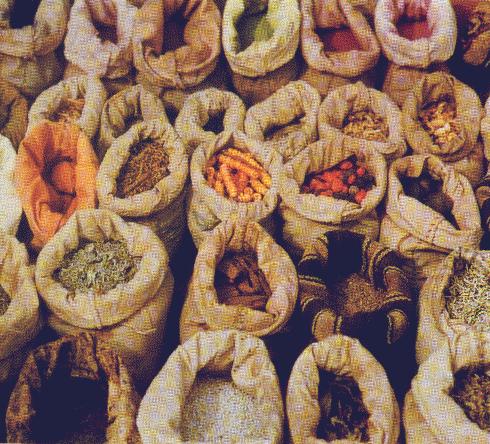Maintenance
Maintenance: Storage
I. Introduction
II. The Quollqas - Inca storage warehouses
- Functions
- Quollqas as refrigerators
- Structure
- Stored Items
- Transport of Storage
- Storage as a Sign Of Wealth
Back to Maintenance Front Page
Previous Page: Production | Next Page : Economy
I
. IntroductionSustainability within a culture relies upon an organized infrastructure such that the populace is fed adequately, the diverse ethnic and social groups accept their societal responsibilities, and most importantly measures are taken to optimally use the available resources. The Inca Empire excelled in dealing with each of these concerns. Their storage and agricultural practices serve as examples of this success.
Top of PageII. The Quollqas - Inca storage warehouses
A. Functions
Large and visible to locals and located in the center of the provinces were storehouses, called qollqas. Qollqas served as the functional warehouse of everyday goods as well as a physical reminder of the vast provisions offered by the empire in times of need (e.g. famine). Inca storehouses were purposely built in prominent locations where the local inhabitants of a region could see them. Such conspicuous placement served to impress the subject peoples as symbols of imperial might, displaying the resources controlled by the state. Because the people were also required to contribute labor (and ultimately goods) to the state, the storehouses also could have been constant reminders of their obligation to support the empire.
The Incas placed the qollqas at the tops of hills in order to:
- be easily seen from all parts of the province-- as a constant psychological reminder of the state’s authority and surplus of goods
- avoid use of more arable lowlands
- take advantage of the wind and low temperatures of the high altitudes for its refrigerator like properties
To see a diagram of a quollqa, see the
AppendixB. Qollqas, the Incan Refrigerator
The qollqas were one-room masonry that had ducts throughout their construct that allowed for ventilation. The lower ventilation allowed air to circulate through underground channels and escape out through the top slits; this airflow fostered freezing of the foodstuffs. It has been shown that this freezing method prevented fungal growth within the stored maize. The maize could have been kept for up to 4 years if it was properly dried and there was no fungi within it before storage
C. The Structure of the Qollqa
The qollqa were normally designed with a rectangular or circular base. The rectangle was approximately 2.5-3.4 meters wide and 3-10m long. The circle base was approximately 5m in diameter. Qollqas were normally placed in a row on the top of a hillside. Respective to the size of the city, there could be anywhere from 2-15 qollqas.
D. Stored Items
- Surplus food
- Material goods
- Textiles
- Arms
- Coca leaves, cocaine -- mainly used in the religious rituals and by the elite
- Quinine -- an antimalarial drug accredited to Incan discovery
III. Importance of storage
A. Transport of the surplus
The major focus of Inca labor service was the production and movement of goods to the qollqas. Storage enabled the maintenance of a stable food supply in spite of a variable climate that resulted in frequent crop failures, especially in the highlands.
Although each village was responsible for being self-sufficient and contributing to the empire’s surplus, the few areas that were highly productive (well-irrigated coastal valleys) contributed a larger part to the surplus in Cuzco. This large movement of the surplus served as a tax mainly used to feed army members and state officials at state functions. As opposed to having a constant food source, one village’s surplus was moved around the empire.

Grains grown in the Peruvian highlands
B. Storage as a sign of wealth
Since the Incas did not have a monetary system, the empire utilized storage as a documentation of the financial wealth of the nation and its ability to finance a wide range of activities, including empire-wide supply lines for security and communication operations. The nature of storage was regionally patterned suggesting that the raising of revenues was specific to each area. The Inca utilized each region to yield the highest financial gain through the storage of regional resources and the efficient usage of local labor service, which varied directly with the magnitude of storage.
Back to
Maintenance Front PagePrevious Page: Production | Next Page : Economy